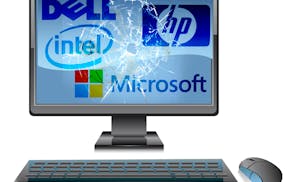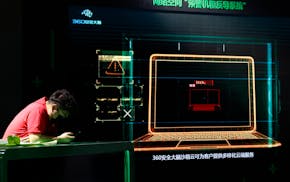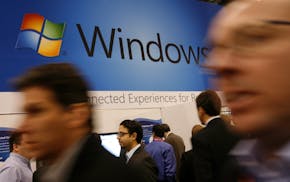Q I have a lot of e-mails in separate folders of my Microsoft Outlook program, and I want to take some of them off my Windows XP computer and save them on CDs. How can I do that?
RAMONA WUERTZ-MASELTER, CAMBRIDGE, MINN.
A You can save your Outlook e-mail to a separate, non-Outlook file folder on your PC, then copy the folder onto a blank CD.
First create the new file folder. In Windows Explorer, choose My Computer, then highlight the C disk. In the File menu choose "New" and, off to the right, "Folder." The new folder will show up in the C drive's list of folders. To give the folder a new name, right click it, choose "Rename," type the new name and hit the enter key.
You can copy e-mails from Outlook one at a time or in groups. Click the Edit heading, then use the "Copy" (individual files) or "Select All" and "Copy" (all the files in one Outlook folder) commands, then go to your new folder and "Paste" the e-mails.
For details on how to burn the folder to a CD, go to Start, pick Help and Support Center and search for "Burn CD." Then click "Copy Files and Folders to a CD."
Q I have a seven-year-old Windows XP computer with 248 megabytes of RAM. I recently bought a new PC security program, McAfee Total Protection 2009, but then discovered that its system requirements include 256 megabytes of RAM. What can I do?
JAN SCHALLOW, CARVER
A You could upgrade your PC's random access memory, although buying a new PC would make sense after seven years because new software will continue to stretch the old PC's capabilities.
Another option is to switch to an antivirus program with lower system requirements, such as AVG Anti-Virus Free Edition 8.5.278 (free to home users) for Windows XP, which requires only 64 megabytes of RAM. To find it, go to www.download.com and type "AVG antivirus" in the search field. There's also AVG Anti-Virus 8.5.276 for business users, which is free to try but then costs $34.99.
Q After more than two years of using a USB flash drive, I suddenly can't delete files from it or copy files to it. The drive is only about three-quarters full. Any ideas?
BRYAN FLEMMING, ST. MICHAEL, MINN
A See if your flash drive has a small "write protect" switch that turns it into a "read-only" device on which no data can be changed. The switch is typically so tiny you'd have to move it with the tip of a pen. Of the six flash drives I own, two have such a switch.
E-mail tech questions to steve.j.alexander@ gmail.com, or write Tech Q&A, 425 Portland Av. S., Minneapolis, MN 55488-0002. Include name, city and phone number.

Alexander: A beeping computer is telling you what's gone wrong inside

Alexander: How to stop deleted iPhone e-mails from coming back

Alexander: Refurbished PCs may need a BIOS update to use new components

Alexander: Windows 11 not always to blame for browser or e-mail problems


